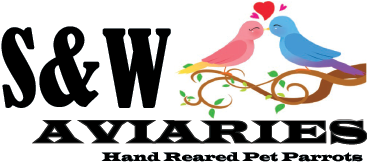Basic Training for your Parrot
Training pet parrots has benefits that extend well beyond the entertainment value of a parrot that can talk and do tricks. Training will strengthen the bond you have with your parrot; they will look forward to the one-on-one attention involved in training sessions, especially when success means lots of praise and attention along with favourite treats. In addition, teaching some simple commands will make handling your parrot easier.
Stepping Up
This means training your parrot to step up onto your finger or wrist (or a hand-held perch) on command and then step back off again. These are relatively easy and extremely important skills to teach.
Stepping up is quite a natural movement for a parrot so it is generally easy to train this on command (stepping down is a bit trickier to teach). Getting your parrot to step up and step down on command makes handling much easier and helps you to set some boundaries for your parrot (eg. easily remove your parrot from areas of the home that are not safe, return a parrot back to their play gym or cage, etc.).
If you have a baby parrot, they are probably pretty cooperative but starting early with the step up and step down commands is still a good idea. Not only does training a cooperative baby allow you to give lots of positive reinforcement, it sets a good foundation for training more skills to your parrot in the future.
Recall
Place the parrot on a steady perch and stand near enough to give them a treat, and then move away a few centimeters, so the parrot has to stretch forward. Then move a little further so they have to hop onto your hand. Once that behavior is confirmed, it follows easily that the young parrot will flap a few paces to your hand. Use your positive word “good parrot’ or whatever and give a treat.
It should not take more than a few days before a parrot will answer the contact call. We use “fly to me”, “come”, and “here”. You can give recall lessons before feeding breakfast or giving the afternoon feed. It is easier to train parrots if they do not have food bowls filled all day long. If food bowls are left filled, a parrot often nibbles all day and when you want some response from them, they are not hungry.
Once the parrot is flying a few metres reliably to your hand, you can add all sorts of exercises and games. Hiding in another room and calling your parrot to you. Once your parrot responds to your contact call or whistle you can play “Hide and Seek”. It is important that a parrot responds immediately (within a few seconds) to your call. If you persist in repeating the call and the parrot only responds after several minutes, then you are inadvertently teaching latency. The way to avoid this is if the parrot does not come to the first request; turn your back, maybe leave the room for a few seconds. If your timing is right, the parrot is eager for the treat (whether it’s a favourite food, a desired toy or a head scratch) so they soon realize that non-compliance means no reward.
